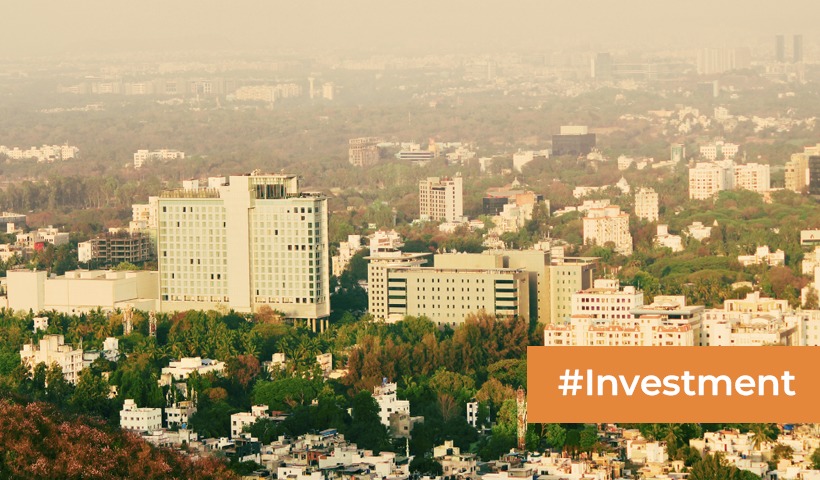What is hurdle rate in real estate investment? Why is it important?
Embarking on a real estate investment journey demands a comprehensive understanding of various financial metrics, and among them, the “hurdle rate” stands out as a critical determinant of investment success. In the context of Indian real estate, comprehending the significance of the hurdle rate is pivotal for investors navigating the complexities of property investment. This article aims to demystify the concept of the hurdle rate, elucidate its importance, and shed light on its application in the Indian real estate landscape.
Decoding the Hurdle Rate:
Definition:
In essence, the hurdle rate, also known as the required rate of return, is the minimum rate of return that an investor expects from an investment to justify the associated risks and allocate capital effectively. It serves as a benchmark, representing the baseline return that an investment must surpass to be deemed worthwhile.
Components of the Hurdle Rate:
The hurdle rate is composed of various components, each reflecting different aspects of the investment. These components typically include the risk-free rate, equity risk premium, and specific project or market risk factors.
Application in Real Estate:
In the realm of real estate investment, the hurdle rate plays a pivotal role in assessing the viability of a project. It considers factors such as the cost of capital, potential risks associated with the specific property or market, and the expected return on investment.
Why is the Hurdle Rate Important in Indian Real Estate?
Risk Mitigation:
Real estate investments in India are subject to a myriad of risks, including market volatility, regulatory changes, and project-specific challenges. The hurdle rate acts as a risk mitigation tool by establishing a minimum return that justifies the inherent risks associated with a particular investment.
Capital Allocation:
Investors often have multiple investment opportunities, each carrying its unique risk-return profile. The hurdle rate assists in rationalizing capital allocation decisions by providing a standardized benchmark against which different investment options can be evaluated.
Project Viability Assessment:
For developers and real estate professionals, the hurdle rate serves as a crucial metric for assessing the viability of a project. It helps in determining whether the anticipated return justifies the capital invested and whether the project aligns with the investor’s overall financial objectives.
Alignment with Investor Goals:
Investors in Indian real estate often have diverse financial goals, whether it’s long-term capital appreciation, regular income through rental yields, or a combination of both. The hurdle rate ensures that the chosen investment aligns with the investor’s specific financial objectives and risk tolerance.
Calculating the Hurdle Rate:
Factors Influencing Hurdle Rate Calculation:
- Risk-Free Rate: Typically based on government bond yields, it represents the theoretical risk-free return an investor could achieve.
- Equity Risk Premium: Reflects the additional return demanded by investors for bearing the risk associated with investing in equities.
- Market and Project-Specific Risks: Factors such as location, property type, and market conditions influence the specific risks associated with a real estate investment.
Formula:
The general formula for calculating the hurdle rate is as follows:
HurdleRate = Risk−FreeRate + EquityRiskPremium + Project − SpecificRiskFactors
Hurdle Rate in Different Real Estate Investment Scenarios:
Residential Real Estate:
For investors in residential properties in India, the hurdle rate may be influenced by factors such as location, potential for appreciation, and the demand for rental properties. Investors may prioritize stable rental income or focus on long-term capital appreciation, impacting the hurdle rate calculation.
Commercial Real Estate:
In the commercial real estate sector, factors like tenant quality, lease terms, and the economic outlook of the region play a crucial role. The hurdle rate for commercial properties in India may be influenced by the potential for steady rental income and the likelihood of future property value appreciation.
Real Estate Development Projects:
For developers involved in real estate projects, the hurdle rate is instrumental in evaluating the financial viability of a venture. It considers factors such as construction costs, market demand, and potential sales or lease revenues.
Real-World Application: Case Studies and Examples:
Case Study 1: Residential Property Investment
Consider an investor evaluating a residential property in a rapidly developing suburb. The investor may calculate the hurdle rate based on factors like the prevailing risk-free rate, the growth potential of the suburb, and the expected rental yields. This calculation helps determine whether the investment aligns with the investor’s return expectations.
Case Study 2: Commercial Real Estate Project
A developer planning a commercial complex in a central business district would assess the hurdle rate considering factors such as construction costs, potential rental income from tenants, and market demand for commercial spaces. The hurdle rate would guide the developer in deciding whether to proceed with the project or explore alternative opportunities.
In the dynamic landscape of Indian real estate, the hurdle rate emerges as a compass guiding investors and developers through the complexities of investment decisions. Its role in risk mitigation, capital allocation, and project viability assessment underscores its significance in achieving financial success.




